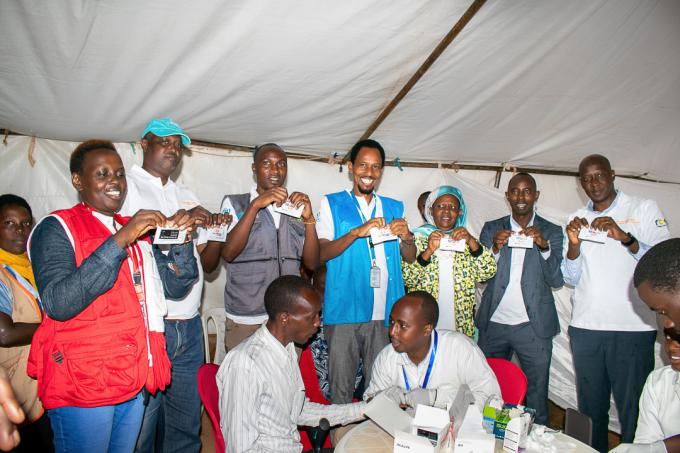Burundian Refugee Influx - Mahama Refugee Camp February
ESA - East and Southern Africa Rwanda Date: 04/02/2020

CONTEXT UPDATE
Since the beginning of April 2015, a steady outflow of Burundians has been taking place into the Republic of Rwanda and to other surrounding countries. Over 400,000 Burundians have fled the country, with more than 60,000 now living in Mahama Camp. The situation in Burundi remains volatile, and it is unclear when the refugees may be able to return home. Many refugees left their homes without essential supplies, and the lack of livelihood opportunities mean they are entirely reliant on aid agencies, donors and host governments to support their basic needs. Save the Children is working in Mahama Camp and 2 reception centers covering a range of essential services such as, community and child protection, primary health and nutrition care.
Since the outbreak of Ebola Virus Disease (EDV) in the Democratic Republic of Congo (DRC) in North Kivu and Ituri provinces at the end of 2018, Rwanda is on the doing preparedness activities and outreach campaigns in the critical areas for prevention measures. As of September 2019, there had been no case of Ebola imported from the DRC into Rwanda.
RESPONSE UPDATE
A national campaign named ‘’Rwanda Cares” aiming at Hepatitis C Elimination in Rwanda was was launched in Mahama camp in January and It’s a big relief to Burundian refugees who had been waiting for so long. This is a result of a joint effort of Save the Children, ALIGHT, MINEMA and UNHCR and it is a big step towards the integration of refugees into the national health care systems. As of now, 3000 refugees have been screened, those who tested hepatitis positive are under treatment. During this reporting period, Save the Children directly reached 44,459 beneficiaries including 22409 children through Health, Nutrition and child protection program. Save the Children provided primary care services to 8298 (3568 M, F 4730) people including 4532 (2294 M, 2238F), moreover 120 pregnant women attended Save the Children run antenatal clinic and 96 women received postnatal care services. a total number of 255 women of reproductive age were provided with family planning services and 2 pregnant women with obstetric complications were referred to district hospital for comprehensive medical care. New 8 child protection cases were identified and the survivors received integrated case management services.
CHILD PROTECTION
Save the Children continued to increase community engagement in child protection response and prevention activities. Save the Children also continued to strengthen the collaboration between refugee community-based child protection structures and host community. Refugees Child Protection structures with the support of Save the Children conducted the evening of parents where they emphasized on children’s rights, importance of school and the parents’ responsibilities on children’s school attendance with the participation of 1,133 ( 813 female and 320 Male)
NUTRITION
Save the Children continues to provide nutrition services to Burundian refugees. SCI reached 1824 children through BSFP, 1506 lactating and pregnant women, 10 people with TB, and 344 living with HIV. New cases of 16children were admitted for SAM into OTP and 102 children were admitted for MAM into SFP. in total 4466 children including 2270 male and 2196 female were screened for malnutrition by Community Health Workers using MUAC tape at community level.
HEALTH
Save the Children provided primary care services to 8298 (3568 M, F 4730) people including 4532 (2294 M, 2238F), moreover 120 pregnant women attended Save the Children run antenatal clinic and 96 women received postnatal care services. a total number of 255 women of reproductive age were provided with family planning services and 2 pregnant women with obstetric complications were referred to district hospital for comprehensive medical care.


 Rwanda
Rwanda